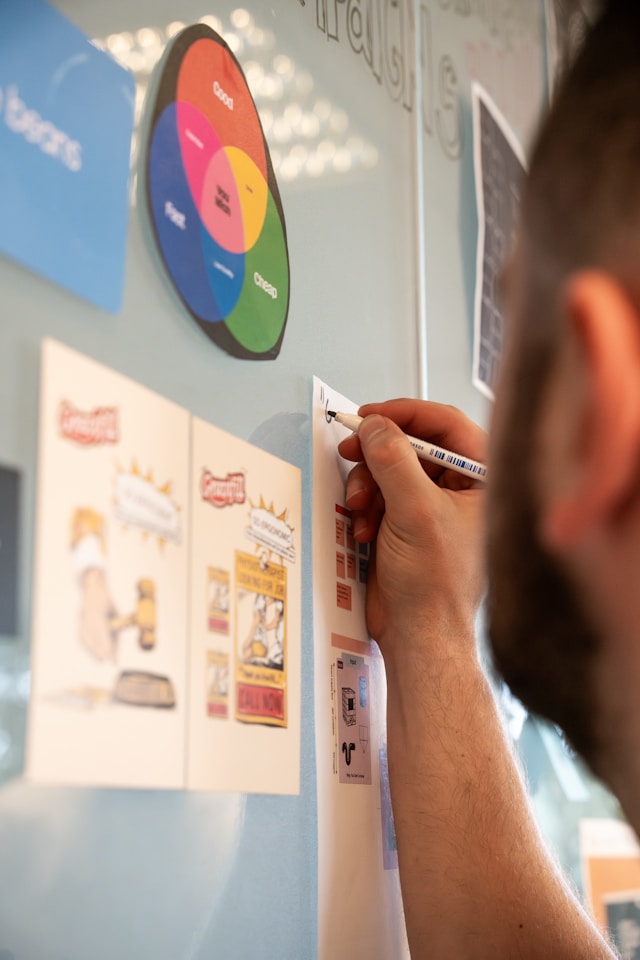As you probably know, scaling a business in today’s market isn’t just about speed but about doing it smarter than your competitors. The Build-Operate-Transfer (BOT) model, especially in Latin America, has become a go-to strategy for companies that want fast, controlled, and cost-effective growth.
With 38% of U.S. businesses planning to increase their use of nearshore teams in LATAM by the end of 2025, according to the Everest Group, the demand for scalable, high-ROI models like BOT is rising. This model lets you build a team, operate it under expert oversight, and then fully transfer control when you're ready, without the growing pains of setting up from scratch.
This article explores how the LATAM BOT model works, why it can triple your scaling speed, and what ROI to expect. You'll learn how companies use Build, Operate, Transfer to boost delivery, reduce risk, and scale into new markets faster than traditional methods. If you're considering global expansion or team augmentation, this guide breaks down everything from early planning to long-term gains. Keep reading to learn more!
First Things First: Here’s How the BOT Model Supports Rapid Scaling
The BOT model is built for speed. It allows your business to tap into mature infrastructure and talent pools without waiting months or even years to set up operations from scratch. By launching through a trusted Build-Operate-Transfer structure in Latin America, companies can reduce go-live timeframes by as much as 50%, according to McKinsey.
Speed alone isn’t the only advantage. The “Operate” phase is what accelerates results. While your dedicated nearshore team gets up to speed, the local BOT partner handles onboarding, compliance, infrastructure, and daily operations. That means your core team stays focused on strategic goals while your extended unit starts delivering fast. No need to micromanage. No expensive learning curve.
Another factor that drives rapid scaling is standardized processes. BOT partners often bring proven SOPs, agile development pipelines, and cross-functional management systems that have already been tested in similar industries. This eliminates inefficiencies during the ramp-up period and keeps productivity consistent as headcount grows.
The model also supports staged expansion. Start small with a squad of 5–10 developers or support staff. Once that team is stable and delivering, you can scale in phases without losing control. Gartner reports that companies using phased nearshore BOT strategies saw a 32% faster path to profitability compared to those using traditional outsourcing.
LATAM BOT teams are also timezone-aligned with North American companies. That enables real-time collaboration, faster sprints, and fewer blockers, critical elements when scaling under pressure. Unlike offshore alternatives that work with 10+ hour delays, this synchronicity supports rapid decision-making and iteration.
Remember: rapid scaling isn't just about adding people because it’s cheaper and convenient to do so. It's really about maintaining momentum to maximize your growth. The BOT model provides the operational backbone and scalability framework to do just that, efficiently and at a more sustainable pace.
Adapting the BOT Model for Different Growth Stages
The Build-Operate-Transfer (BOT) model isn’t one-size-fits-all. How you structure and time each phase should align with where your business is in its growth lifecycle. Early-stage startups, mid-sized companies, and enterprise-level firms each need a tailored approach to get the most out of the BOT framework.
Early-Stage Companies: Start Lean, Focus on Core Delivery.
In the early stages, the BOT model helps de-risk expansion. Startups can launch a lean nearshore team to support core functions like software development or customer operations. Instead of investing in permanent infrastructure, you build on top of an existing, pre-vetted system. The “Operate” phase offers critical breathing room to validate market fit and delivery models before committing to transfer.
This lean model minimizes upfront capital while maximizing agility. According to Deloitte, early-stage companies that adopt structured outsourcing models like BOT reduce time-to-market by 40% without increasing operational overhead.
Mid-Stage Scaling: Layer in Functionality and Process Control.
For mid-sized firms, the BOT model becomes a growth multiplier. You’re no longer validating, you’re expanding. At this point, it’s essential to layer in more advanced capabilities, including dedicated project management, security protocols, and region-specific compliance structures. This stage is often where companies expand the team size and introduce multifunctional roles, such as DevOps, QA, or Frontend development..
During the “Operate” phase, a well-managed BOT can integrate seamlessly with your internal processes, allowing for parallel workflows. Standardized reporting, continuous improvement cycles, and embedded KPIs help ensure performance stays aligned with growth goals.
Late-Stage and Enterprise: Optimize for Scale and Sustainability.
Large enterprises use the BOT model not just to scale fast, but to localize strategically. At this level, the focus shifts to integrating the BOT operation into a broader enterprise architecture. That means customizing knowledge transfer protocols, onboarding frameworks, and long-term workforce planning strategies. Some firms even maintain the “Operate” phase longer to reduce transfer risk across multiple geographies.
For these companies, a staged rollout, region by region or department by department, often ensures smoother execution. IDC reports that enterprise organizations using phased BOT transitions in LATAM improved operational efficiency by 27% compared to those that moved to direct ownership too early.
Key Takeaway: Customize BOT Timing and Scope by Growth Phase.
The value of the BOT model increases when aligned with your company’s maturity. Early-stage companies benefit from lean builds, mid-sized firms gain scalability, and large enterprises secure operational continuity. Success hinges on calibrating the size, speed, and depth of each BOT phase to match where your business is, and where it’s headed.
8 Key Tips To Accelerate Business Scalation Through BOT in LATAM

1. Prioritize High-Impact Roles First:
Start your BOT operation by filling the roles that will drive the most immediate business value. These typically include product engineers, QA specialists, and operations leads, functions that directly affect delivery and quality. Scaling through high-output positions first reduces time-to-value. According to KPMG, 64% of successful BOT implementations focused on core delivery roles before expanding to support functions.
2. Choose LATAM Cities With Scalable Talent Pipelines:
Not all cities offer the same depth or readiness for scale. Target metro areas with strong university partnerships, multilingual talent, and stable infrastructure. Cities like Medellín, Guadalajara, and Montevideo have become tech-forward ecosystems built for scale. The World Bank reports that Colombia and Mexico now graduate more than 300,000 STEM students annually, more than any other LATAM countries.
3. Shorten the Operate Phase With Embedded SOPs:
Clear standard operating procedures from day one reduce friction and dependency on the partner organization. Document onboarding checklists, escalation paths, review cycles, and SLAs before going live. The faster your team adopts internal workflows, the sooner you can move to the Transfer phase without disruption.
4. Use Hybrid Management Duringthe Operate Phase:
Avoid the trap of leaving everything to the BOT partner. Assign internal stakeholders, such as product owners or tech leads, to co-manage operations early on. This helps synchronize workflows, speed up decision-making, and align the new team with company culture.
5. Automate Communication and Tracking:
Deploy systems that support async communication and real-time tracking. Tools like Jira, Slack, or Notion help maintain transparency across time zones and teams. When operational oversight is automated, you can focus on driving outcomes instead of chasing updates. Efficient communication loops also support faster sprint cycles and more responsive product development.
6. Establish Clear KPIs From Day One:
Don’t wait until the Transfer phase to measure success. Define performance KPIs early in the Operate phase. Include metrics tied to delivery velocity, system uptime, error rates, and employee retention. When KPIs are established upfront, it’s easier to identify gaps and optimize the model before taking full ownership.
7. Time the Transfer Phase Strategically:
Moving too fast, or too slow, into the Transfer phase can stall scalation. Align the transfer timeline with your internal readiness, not just the BOT partner’s calendar. That includes having internal leadership in place, solid process documentation, and localized HR/legal frameworks ready to go.
8. Maintain Talent Continuity After Transfer:
One of the most common reasons for a scaling stall post-transfer is attrition. Retain key team members by offering competitive packages, performance bonuses, and clear career paths. Ensure local leadership remains intact during and after the transition. Continuity is what turns a functional BOT operation into a long-term growth engine.
Ready to Scale 3x Faster with BOT LATAM?
We hope this article helped you understand how scaling through a BOT model in LATAM is structurally smarter. When executed with the right timing and strategy, businesses can expand operations up to 3x faster while maintaining performance and control. The key lies in how well the BOT model is tailored to your specific growth phase, operating environment, and technical requirements.
At BOT LATAM, we specialize in helping companies scale efficiently across Latin America by building fully managed nearshore operations designed for seamless transfer. Our teams have supported several BOT transitions, as we provide the operational oversight, local expertise, and legal frameworks needed to accelerate growth without adding internal strain. Whether you're launching your first remote engineering hub or expanding an existing team, we provide the infrastructure and on-the-ground execution to make the Build-Operate-Transfer model work at scale. Schedule a free consultation to explore how we can support your next phase of growth!

Revolutionize Your Workflow with Our Innovative BOT Strategy!
Enhance your operations seamlessly and adapt to market demands
Contact Us


%2016.01.18.png)
.jpg)
